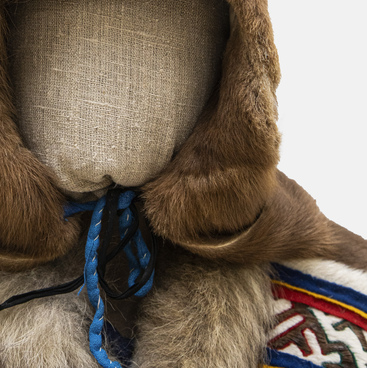The Nenets Museum of Local Lore started forming a collection dedicated to the life of the European Nenets almost a century ago. It features unique examples of handicrafts and spiritual culture. Every Nenets woman’s bag is custom-made and unique.
A “tutsya” or “tucheyka” is a small, dyed suede bag with an opening, closed by a buckskin cord. A tucheyka is a Nenets woman’s most treasured possession since it is used to keep all the sewing accessories, such as pieces of fabric, suede, and leather, colored threads, pearls, beads, buckles, fringes, and needles.
Sewing was the main occupation of women of northern peoples. Throughout her life, a woman sewed winter and summer clothes for her family members, as well as large pieces of canvas for the walls of portable chum tents. From the age of five, a girl learned to work with leather, hides, furs, cloth, and tendon threads. She started by making her first doll which is the size of her palm. She also designed traditional clothes, birch bark furniture and utensils for the doll. At the same time, she got her first tucheyka.
The place of this bag was on the woman’s side of the chum tent, near her bed. A tucheyka was made of two skins taken from the forehead of a reindeer. They were sewn together with a strip of fur. The decorative pattern was usually the same on both sides but was created using contrasting colors. A fringe of rovduga (buckskin) was sewn along the semi-oval main part.
Bells or hooves of newborn reindeer were suspended on the fringes. When a girl picked up the bag, it made a distinctive rustling and jingling sound, which, according to traditional beliefs, protected the owner from evil spirits.
A tucheyka was always beautifully decorated as it represented the woman’s skill, taste, and imagination. Each color had its own symbolic meaning, and the traditional decorative pattern symbolized the world around the owner — her home, the sun, and deer.
One side of the tutsya bag featured a small purse
hung on a loop or a metal chain. It was called a “padko” and was used to store
tendon threads. The other side was equipped with an elaborately decorated pincushion.
Northern women made tendon threads by hand and used fish bones as needles.



